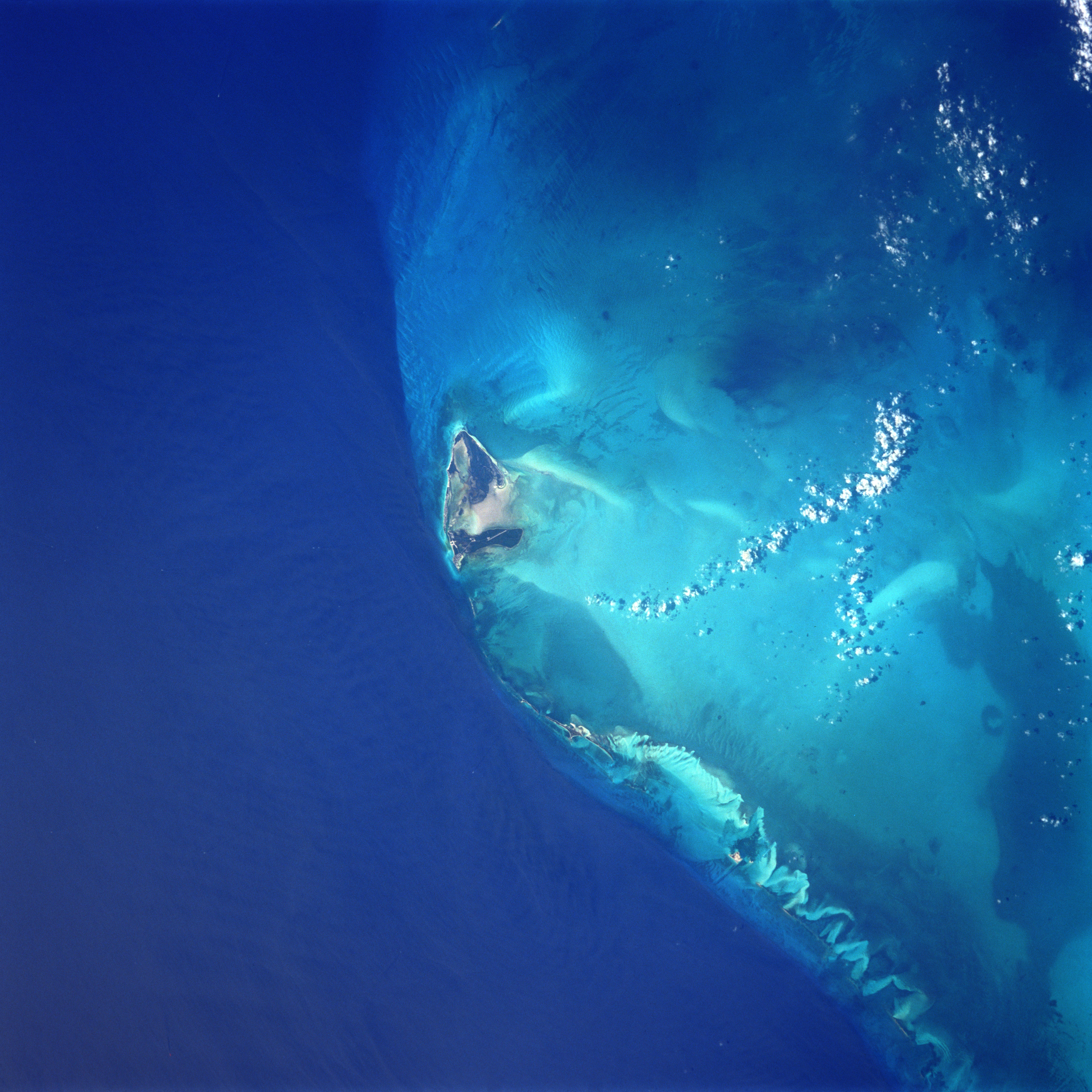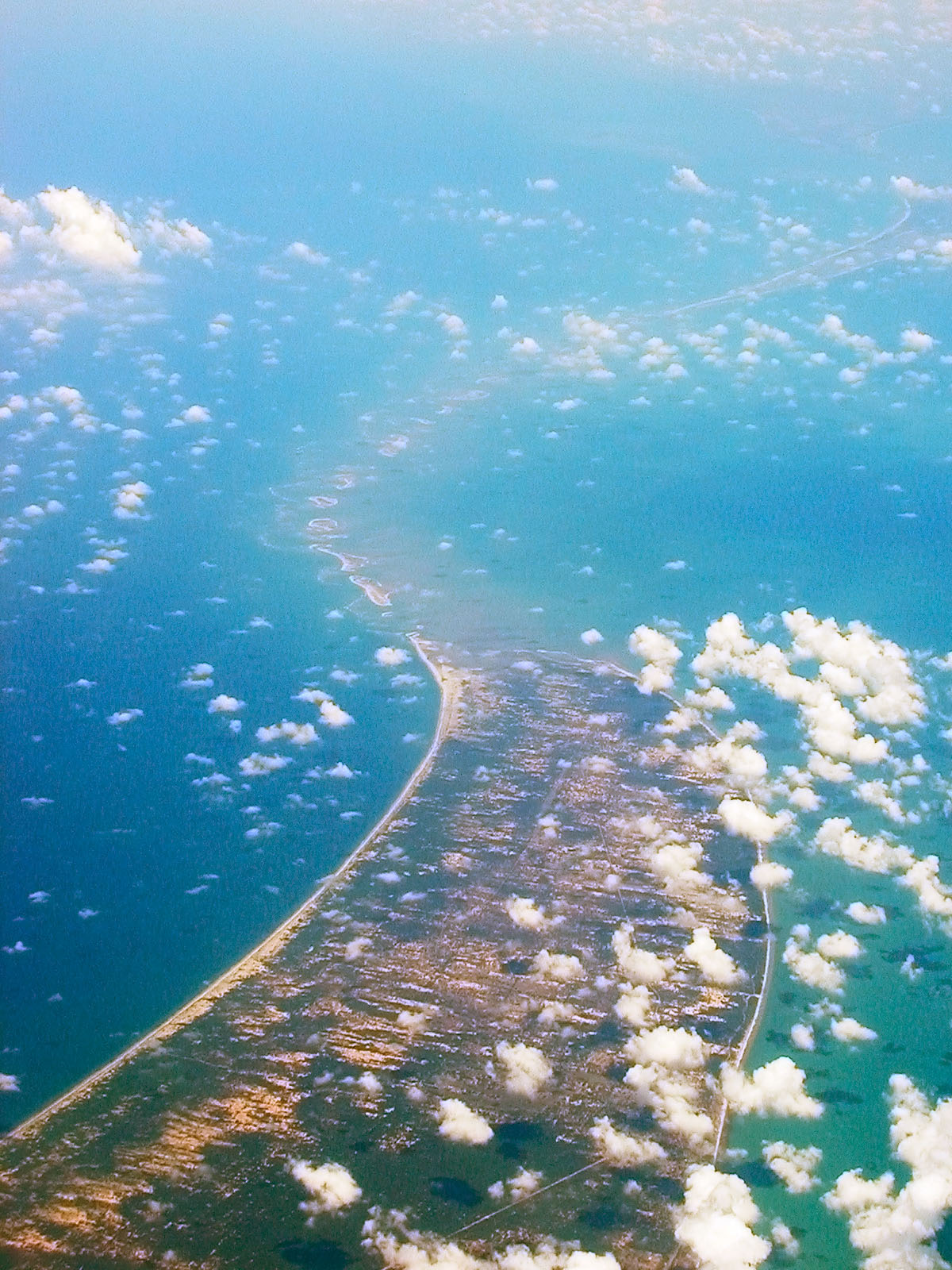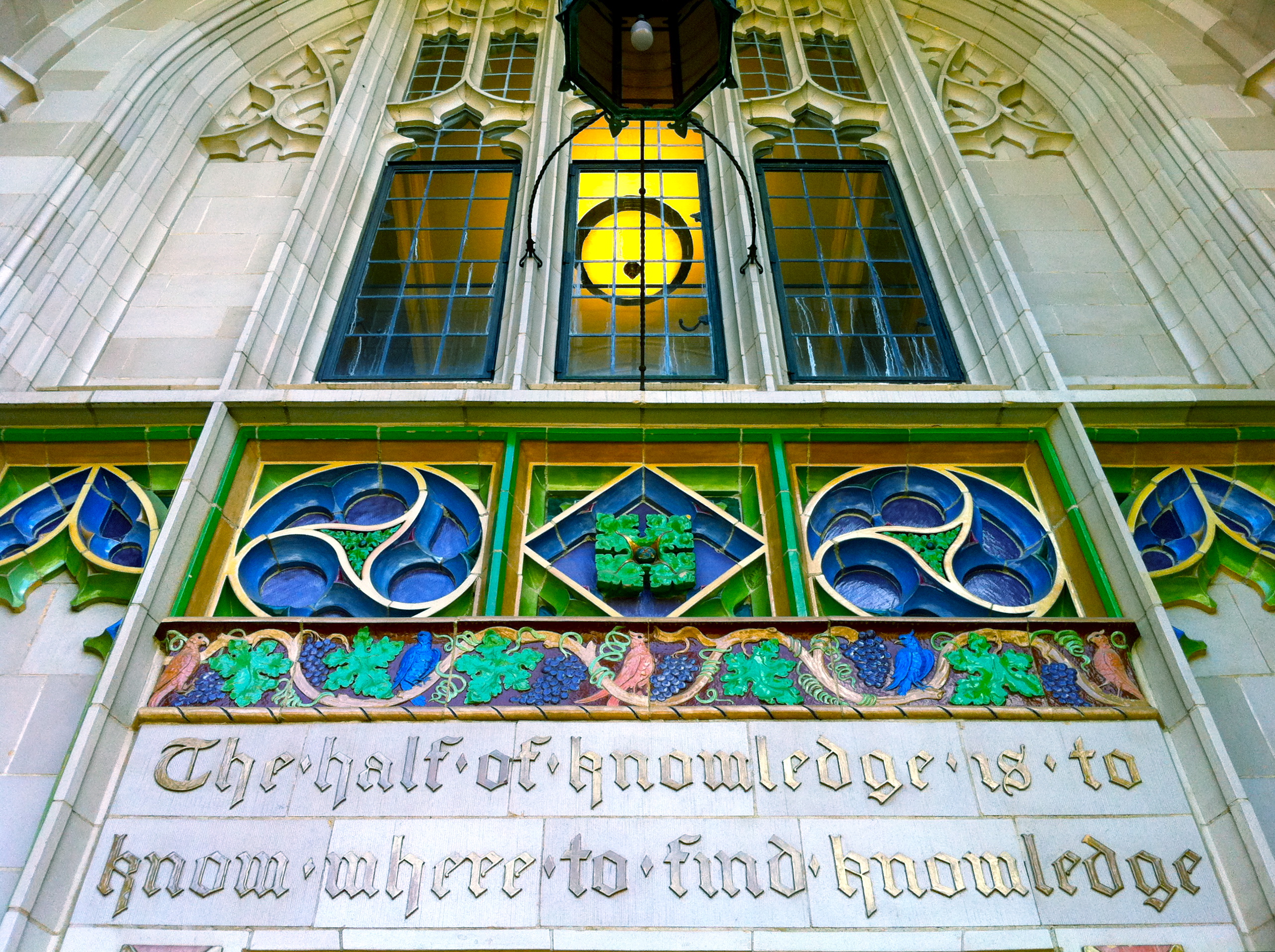|
Cuban Underwater City
The Cuban underwater formation is a site thought by some to be a submerged granite structural complex off the coast of the Guanahacabibes Peninsula in the Pinar del Río Province of Cuba. Overview Sonar images interpreted as being symmetrical and geometric stone structures resembling an urban complex were first recorded in early 2001 covering an area of at depths of between and . The discovery was reported by Pauline Zalitzki, a marine engineer, and her husband Paul Weinzweig, owners of a Canadian company called Advanced Digital Communications, working on an exploration and survey mission in conjunction with the Cuban government. The team returned to the site a second time with an underwater remotely operated vehicle that filmed sonar images interpreted as various pyramids and circular structures made out of massive, smooth blocks of stone that resembled hewn granite. Zalitzki said "It's a really wonderful structure which really looks like it could have been a large urban ... [...More Info...] [...Related Items...] OR: [Wikipedia] [Google] [Baidu] |
Pinar Del Río Province
Pinar del Río is one of the provinces of Cuba. It is at the western end of the island of Cuba. Geography The Pinar del Río province is Cuba's westernmost province and contains one of Cuba's three main mountain ranges, the Cordillera de Guaniguanico, divided into the easterly Sierra del Rosario and the westerly Sierra de los Órganos. These form a landscape characterised by steep sided limestone hills (called mogotes) and flat, fertile valleys. One such topographic feature, the Viñales Valley, is a UNESCO World Heritage Site. The northern coast opens to the great Gulf of Mexico, and is lined by the Colorados Archipelago, a string of cays and isles developed on a reef barrier. The westernmost point of Cuba, Cabo San Antonio, is located on the Guanahacabibes Peninsula, which is a National Park and a Biosphere Reserve. History The city was founded by the Spanish as ''Nueva Filipinas'' (New Philippines), and the city was renamed Pinar del Río in 1774. The province was founded i ... [...More Info...] [...Related Items...] OR: [Wikipedia] [Google] [Baidu] |
Manuel Iturralde
Manuel A. Iturralde-Vinent (born Cienfuegos, 10 July 1946), is a Cuban geologist and paleontologist and former deputy director of the Cuban National Natural History Museum in Havana. He is a scientific personality in Cuba and the Caribbean and President of thCuban Geological Societyfor 2007-2016. He has conducted several studies on the Cuban and Caribbean geology, paleontology and caves, publishing a number of books and articles on the subject. In the field of paleontology has been a prominent fossil hunter who shed light on Jurassic of Cuba with Argentinian researchers, especially Zulma Brandoni Gasparini, revising the taxonomy of Cuban species of marine reptiles and dinosaur. He made several discoveries in the field including Vinialesaurus carolii. He has worked with the American Museum of Natural History to discover and excavate Miocene vertebrates at the paleontological site of Domo de Zaza and other localities in Cuba, Haiti, Dominican Republic, Jamaica and Puerto Rico. He ... [...More Info...] [...Related Items...] OR: [Wikipedia] [Google] [Baidu] |
Landforms Of Cuba
A landform is a natural or anthropogenic land feature on the solid surface of the Earth or other planetary body. Landforms together make up a given terrain, and their arrangement in the landscape is known as topography. Landforms include hills, mountains, canyons, and valleys, as well as shoreline features such as bays, peninsulas, and seas, including submerged features such as mid-ocean ridges, volcanoes, and the great ocean basins. Physical characteristics Landforms are categorized by characteristic physical attributes such as elevation, slope, orientation, stratification, rock exposure and soil type. Gross physical features or landforms include intuitive elements such as berms, mounds, hills, ridges, cliffs, valleys, rivers, peninsulas, volcanoes, and numerous other structural and size-scaled (e.g. ponds vs. lakes, hills vs. mountains) elements including various kinds of inland and oceanic waterbodies and sub-surface features. Mountains, hills, plateaux, and plains are t ... [...More Info...] [...Related Items...] OR: [Wikipedia] [Google] [Baidu] |
Geography Of Pinar Del Río Province
Geography (from Greek: , ''geographia''. Combination of Greek words ‘Geo’ (The Earth) and ‘Graphien’ (to describe), literally "earth description") is a field of science devoted to the study of the lands, features, inhabitants, and phenomena of Earth. The first recorded use of the word γεωγραφία was as a title of a book by Greek scholar Eratosthenes (276–194 BC). Geography is an all-encompassing discipline that seeks an understanding of Earth and its human and natural complexities—not merely where objects are, but also how they have changed and come to be. While geography is specific to Earth, many concepts can be applied more broadly to other celestial bodies in the field of planetary science. One such concept, the first law of geography, proposed by Waldo Tobler, is "everything is related to everything else, but near things are more related than distant things." Geography has been called "the world discipline" and "the bridge between the human and ... [...More Info...] [...Related Items...] OR: [Wikipedia] [Google] [Baidu] |
Yonaguni Monument
The , also known as , is a submerged rock formation off the coast of Yonaguni, the southernmost of the Ryukyu Islands, in Japan. It lies approximately a hundred kilometres east of Taiwan. Marine geologist Masaaki Kimura claims that the formations are man-made stepped monoliths. These claims have been described as pseudoarchaeological. Neither the Japanese Agency for Cultural Affairs nor the government of Okinawa Prefecture recognise the features as important cultural artifacts and neither government agency has carried out research or preservation work on the site. Discovery The sea off Yonaguni is a popular diving location during the winter months because of its large population of hammerhead sharks. In 1986, while looking for a good place to observe the sharks, Kihachiro Aratake, a director of the Yonaguni-Cho Tourism Association, noticed some singular seabed formations resembling architectural structures. Shortly thereafter, a group of scientists directed by Masaaki Kimur ... [...More Info...] [...Related Items...] OR: [Wikipedia] [Google] [Baidu] |
Unidentified Submerged Object
An unidentified submerged object (USO) is an unidentified object submerged in water. This term does not necessarily refer to an object of paranormal activity origin. See also * Baltic Sea anomaly * Bimini Road * Cuban underwater formation * Eltanin Antenna * Marine archaeology in the Gulf of Cambay * Pantelleria Vecchia Bank Megalith * Stone structure in the Sea of Galilee * Underwater archaeology * Unidentified flying object (UFO) * Yonaguni Monument The , also known as , is a submerged rock formation off the coast of Yonaguni, the southernmost of the Ryukyu Islands, in Japan. It lies approximately a hundred kilometres east of Taiwan. Marine geologist Masaaki Kimura claims that the formati ... References Ufology Underwater archaeology Unexplained phenomena {{paranormal-stub ... [...More Info...] [...Related Items...] OR: [Wikipedia] [Google] [Baidu] |
Bimini Road
The Bimini Road, sometimes called the Bimini Wall, is an underwater rock formation near North Bimini island in the Bahamas. The Road consists of a -long northeast-southwest linear feature composed of roughly rectangular limestone blocks. Various claims have been made for this feature being either a wall, road, pier, breakwater, or other man-made structure. However, credible evidence or arguments are lacking for such an origin. Physical characteristics On September 2, 1968, while diving in three fathoms () of water off the northwest coast of North Bimini island, Joseph Manson Valentine, Jacques Mayol and Robert Angove encountered what they called a "pavement" of what later was found to be noticeably rounded stones of varying size and thickness.Valentine, J. M., 1969, ''Archaeological enigmas of Florida and the Western Bahamas.'' Muse News (Miami Museum of Science). v. 1, pp. 26-29,41-47 (1969, June).Valentine, J. M., 1973, ''Culture pattern seen.'' Muse News (Miami Museum of Sci ... [...More Info...] [...Related Items...] OR: [Wikipedia] [Google] [Baidu] |
Baltic Sea Anomaly
The Baltic Sea anomaly is a feature visible on an indistinct sonar image taken by Peter Lindberg, Dennis Åberg and their Swedish Ocean X diving team while treasure hunting on the floor of the northern Baltic Sea at the center of the Gulf of Bothnia in June 2011. The team suggested their sonar image showed an object with unusual features of seemingly non-natural origin, prompting speculation published in Tabloid journalism, tabloid newspapers that the object was a sunken UFO. A consensus of experts and scientists say that the image most likely shows a natural geological formation.Interview of Finnish planetary geomorphologist Jarmo Korteniemi (at 1:10:45) on History The Swedish-based Ocean X describe themselves as treasure hunters and salvage operators. According to the team, they returned from an expedition in the Baltic Sea between Sweden and Finland with a "blurry but interesting" sonar image while searching for an old shipwreck in the summer of 2011. They have claimed their ... [...More Info...] [...Related Items...] OR: [Wikipedia] [Google] [Baidu] |
Adam's Bridge
Adam's Bridge, '; ta, ஆதாம் பாலம் ' also known as Rama's Bridge or ''Rama Setu'', '; ta, ராமர் பாலம் '; sa, रामसेतु ' is a chain of natural limestone shoals, between Pamban Island, also known as Rameswaram Island, off the south-eastern coast of Tamil Nadu, India, and Mannar Island, off the north-western coast of Sri Lanka. Geological evidence suggests that this bridge is a former land connection between India and Sri Lanka. The feature is long and separates the Gulf of Mannar (southwest) from the Palk Strait (northeast). Some of the regions are dry, and the sea in the area rarely exceeds in depth, thus hindering navigation. It was reportedly passable on foot until the 15th century when storms deepened the channel. Ramanathaswamy Temple records say that Adam's Bridge was entirely above sea level until it broke in a cyclone in 1480. Etymology The western world came to know of the bridge via Ibn Khordadbeh's '' Book ... [...More Info...] [...Related Items...] OR: [Wikipedia] [Google] [Baidu] |
Florida State University
Florida State University (FSU) is a public research university in Tallahassee, Florida. It is a senior member of the State University System of Florida. Founded in 1851, it is located on the oldest continuous site of higher education in the state of Florida. Florida State University comprises 16 separate colleges and more than 110 centers, facilities, labs and institutes that offer more than 360 programs of study, including professional school programs. In 2021, the university enrolled 45,493 students from all 50 states and 130 countries. Florida State is home to Florida's only national laboratory, the National High Magnetic Field Laboratory, and is the birthplace of the commercially viable anti-cancer drug Taxol. Florida State University also operates the John & Mable Ringling Museum of Art, the State Art Museum of Florida and one of the largest museum/university complexes in the nation. The university is accredited by the Southern Association of Colleges and Schools (SACS). ... [...More Info...] [...Related Items...] OR: [Wikipedia] [Google] [Baidu] |
Robert Ballard
Robert Duane Ballard (born June 30, 1942) is an American retired Navy officer and a professor of oceanography at the University of Rhode Island who is most noted for his work in underwater archaeology: maritime archaeology and archaeology of shipwrecks. He is best known for the discoveries of the wrecks of the RMS ''Titanic'' in 1985, the battleship ''Bismarck'' in 1989, and the aircraft carrier in 1998. He discovered the wreck of John F. Kennedy's ''PT-109'' in 2002 and visited Biuku Gasa and Eroni Kumana, who saved its crew. Despite his long successes in shipwrecks, Ballard considers his most important discovery to be that of hydrothermal vents. Ballard has also established the JASON Project and leads ocean exploration on the research vessel E/V ''Nautilus''. . Downloahere Early life Robert Ballard grew up in Pacific Beach, San Diego, California to a mother of German heritage and a father of British heritage. He has attributed his early interest in underwater expl ... [...More Info...] [...Related Items...] OR: [Wikipedia] [Google] [Baidu] |
Guanahacabibes Peninsula
Guanahacabibes Peninsula is the westernmost point on the island of Cuba. It is located in Pinar del Río Province, in the municipality of Sandino and is sparsely populated. The waters surrounding the peninsula are important spiny lobster and red snapper fishing grounds. It also boasts the category of ''Biosphere Reserve'', listed by UNESCO in 1987. Its western extremity, Cape San Antonio ( es, Cabo San Antonio), is the westernmost point of Cuba. Overview Its location in the open waters of the Gulf of Mexico makes it vulnerable to hurricanes. The area was severely affected by Hurricane Ivan in 2004 and Hurricane Wilma in 2005. Guanahacabibes was the site of Cuba's first forced labor camp, started at the end of 1960. Conservation The Guanahacabibes National Park on the peninsula is one of the country's largest natural reserves and is separated from the rest of the island by white-sand plains where one of Cuba's largest lakeside areas lies. A relatively small area holds some ... [...More Info...] [...Related Items...] OR: [Wikipedia] [Google] [Baidu] |
.jpg)


